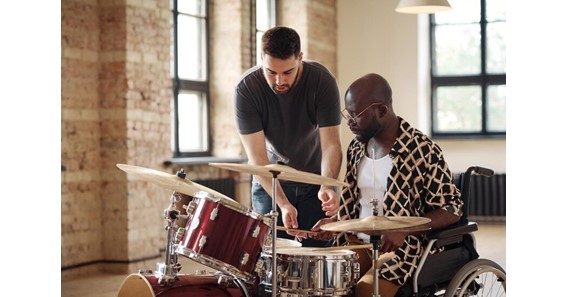Greetings! In this drum lesson, you will have the opportunity to explore the fundamentals of drumming and percussion instruments, while discovering your unique playing style. Throughout this lesson, you will master various rhythm patterns and soloing techniques that will allow you to unleash your full musical potential. We are here to provide you with a comprehensive drum lesson to drumming that will lead you towards a path of musical excellence!
Have you ever thought about why drums are so important in music? Drums are one of the most crucial elements of music as they provide rhythm, texture, and energy to a song. Without drums, music would lack dynamic and interest. Drums act as the foundation of a song, setting the tempo and guiding the other instruments to follow. They also create contrast and dimension within certain sections of a song or arrangement, and build excitement leading up to key moments such as choruses or bridges. Moreover, drums are capable of bringing energy into any type of musical performance, regardless of genre.
Drums have been used by various cultures around the world since ancient times, and they remain a significant part of music today. There are several types of drums available, which can make choosing the right one for your needs seem daunting. However, we’ve got you covered! In this guide, we will explore some of the most popular types of drums.
Acoustic drums are the most common type and are often found in rock and jazz bands. They consist of several pieces, including a bass drum (also known as kick drum), snare drum, tom-toms, and cymbals. Electronic drums, on the other hand, are becoming increasingly popular among musicians as they allow for adding more layers or sounds to performances. This type uses electronic pads that trigger samples stored in a sound module when struck with sticks or hands. Finally, hand drums are smaller than acoustic or electronic drums and are often played with the bare hands.
A drum kit is a collection of components that work together to create a rhythmic sound. It typically consists of drums, cymbals, and other percussion instruments. The bass drum is the most crucial component in any drum kit as it produces low-frequency sounds that are essential to any rhythm section. The snare drum, which produces higher-pitched sounds, adds texture to any rhythm pattern, while tom-toms produce mid-range tones that are great for playing complex rhythms or fills. Finally, a hi-hat cymbal is often placed above these drums for added effect during faster patterns or solos sections.
Playing the drums requires skill and technique. Holding the drumsticks correctly and maintaining proper posture while playing is crucial to producing a quality sound. The most common grip is called “matched grip,” where both hands are held with palms facing down towards each other. Finding a comfortable position based on your size, strength, and personal preference is also essential. Proper posture while playing the drums helps to avoid discomfort and potential injury. With the right technique and posture, you’ll be on your way to becoming a great drummer!






